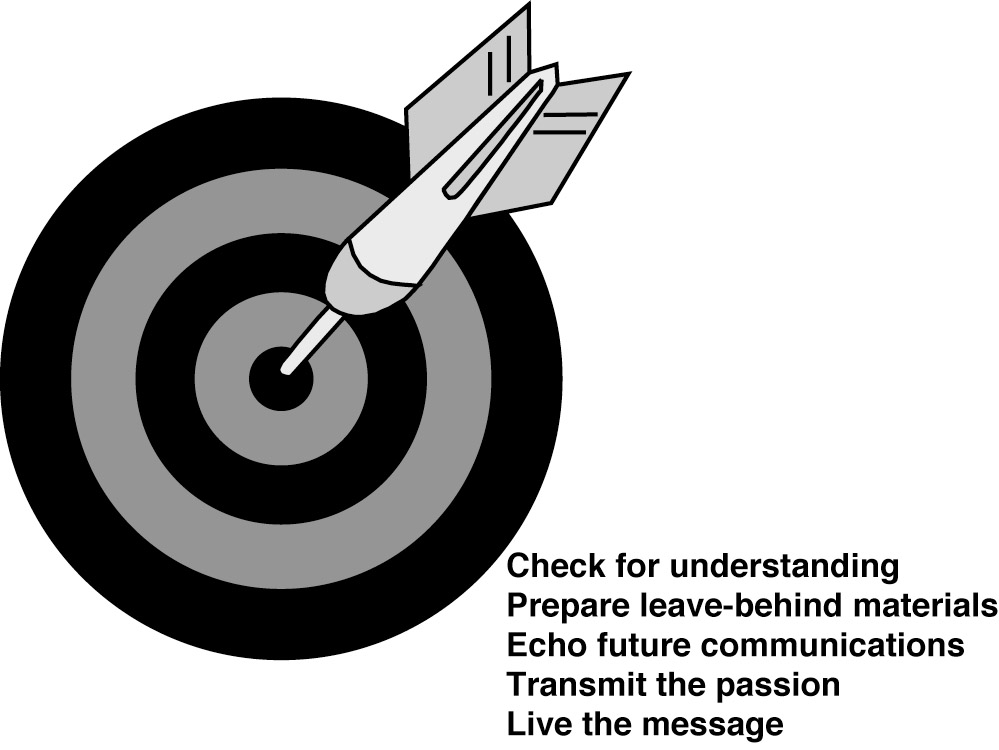Westside Toastmasters is located in Los Angeles and Santa Monica, California - Westside Toastmasters on Meetup
Chapter 11: Making Certain the Message Sticks
Overview
Change requires even more communication than routine activities. Top leaders need to know what's happening in the field. . . . Local units need role models to learn from the experience of their peers. . . . Change can be chaotic without a way to communicate what's happening everywhere.
Rosabeth Moss Kanter
Rosabeth Moss Kanter, E-volve! Succeeding in the Digital Culture of Tomorrow, p. 235.
Every day people throughout the world communicate with one another. These communications occur in ballrooms, boardrooms, back rooms, and even backyards.
Consider a parent who has a long talk with a teenage child about the dangers of smoking. The teen listens attentively and asks questions. Parent and child begin a dialogue with a free exchange of opinions. The teen even agrees with the parent that smoking is bad for you. Two days later the kid comes home reeking of stale cigarette smoke. What the heck happened?
You were clear in your explanation. You described the dangers of smoking and its consequences. You answered the kid's questions. What the heck did you do wrong?
As a presenter, you did fine. As a parent, you failed to gain agreement and discuss the consequences of failure. The relationship between parent and child is not the same as that between presenter and audience, but there is a parallel. As the presenter, you are the expert, "the parent of the information." The audience receives your message; it is "the child of the information." Unless some kind of transformation, or change, occurs, the message will go in one ear and out the other. You as the parent need to give the audience something to remember and something upon which to act. In short, you need to lead.
As the parent, you need to gain the child's agreement to stop smoking and list the consequences of failure to do so. As a leader, you need to gain agreement from your audience and imply the consequences, good and bad, that can occur when the people in the audience follow your message.
Successful leaders are those who take information and give it meaning, or knowledge, that others can use. When this occurs, the message sticks (see Figure 11-1). Whether it is Jack Welch at G.E., Colin Powell and George C. Marshall with the Army, or Vince Lombardi with his teams, a leader makes sure that people understand what the leader is saying and, better yet, understand what they need to do with the information once they have it. Ensuring the viability of a message begins with an understanding of what the leader said.




